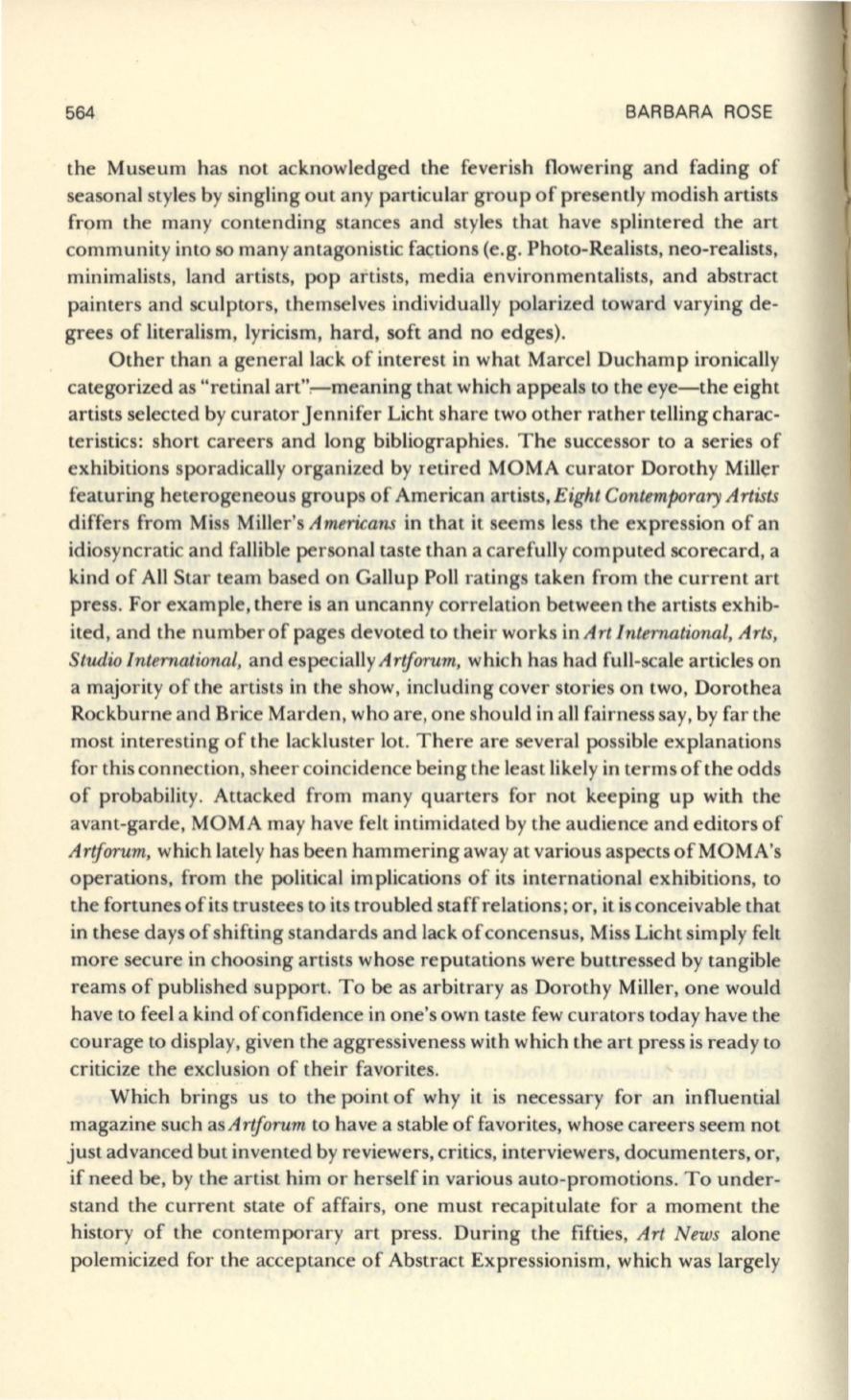
564
BARBARA ROSE
the Museum has not acknowledged the feverish flowering and fading of
seasonal styles by singling out any particular group of presently modish artists
from the many contending stances and styles that have splintered the art
community into so many antagonistic factions (e.g. Photo-Realists, neo-realists,
minimalists, land artists, pop artists, media environmentalists, and abstract
painters and sculptors, themselves individually polarized toward varying de–
grees of literalism, lyricism, hard, soft and no edges).
Other than a general lack of interest in what Marcel Duchamp ironically
categorized as "retinal art":-meaning that which appeals to the eye-the eight
artists selected by curator Jennifer Licht share two other rather telling charac–
teristics: short careers and long bibliographies. The successor to a series of
exhibitions sporadically organized by retired MOMA curator Dorothy Miller
featuring heterogeneous groups of American artists,
Eight Contemporary Artists
differs from Miss Miller's
Americans
in that it seems less the expression of an
idiosyncratic and fallible personal taste than a carefully computed scorecard, a
kind of All Star team based on Gallup Poll ratings taken from the current art
press. For example, there is an uncanny correlation between the artists exhib–
ited, and the number of pages devoted to their works in
Art International, Arts,
Studio International,
and especially
Artforum,
which has had full-scale articles on
a majority of the artists in the show, including cover stories on two, Dorothea
Rockburne and Brice Marden, who are, one should in all fairness say, by far the
most interesting of the lackluster lot. There are several possible explanations
for this connection, sheer coincidence being the least likely in terms of the odds
of probability. Attacked from many quarters for not keeping up with the
avant-garde, MOMA may have felt intimidated by the audience and editors of
Artforum,
which lately has been hammering away at various aspects ofMOMA's
operations, from the political implications of its international exhibitions, to
the fortunes of its trustees to its troubled staff relations; or, it is conceivable that
in these days of shifting standards and lack ofconcensus, Miss Licht simply felt
more secure in choosing artists whose reputations were buttressed by tangible
reams of published support. To be as arbitrary as Dorothy Miller, one would
have to feel a kind ofconfidence in one's own taste few curators today have the
courage to display, given the aggressiveness with which the art press is ready to
criticize the exclusion of their favorites.
Which brings us to the point of why it is necessary for an influential
magazine such as
Artforum
to have a stable of favorites, whose careers seem not
just advanced but invented by reviewers, critics, interviewers, documenters, or,
if need be, by the artist him or herself in various auto-promotions. To under–
stand the current state of affairs, one must recapitulate for a moment the
history of the contemporary art press. During the fifties,
Art News
alone
polemicized for the acceptance of Abstract Expressionism, which was largely


